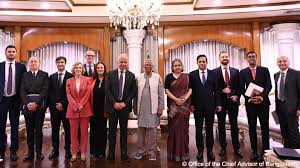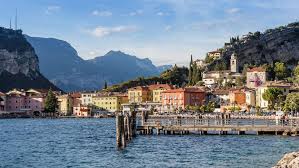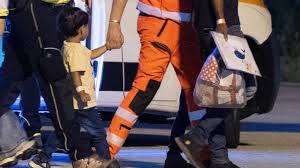Italy and Bangladesh strengthen ties on migration and labor cooperation

Rome: Bangladesh and Italy have signed an MoU to promote regular migration and address labor shortages, with a focus on safe migration and vocational training. The agreement comes during a visit by Italy to Bangladesh.
Bangladesh and Italy have signed a memorandum of understanding (MoU) aimed at combatting irregular migration, while also promoting safe and legal migration pathways for workers, local Bangladeshi media reported.
The agreement, signed on May 6 by the Expatriates’ Welfare and Overseas Employment Adviser Asif Nazrul from Bangladesh and Italian Interior Minister Matteo Piantedosi, comes as Italy seeks to increase its workforce from Bangladesh. Both Italy and Bangladesh pledged to combat human trafficking and facilitate regular migration towards Italy.
Piantedosi said that Italy is eager to hire more Bangladeshi workers, particularly in seasonal and non-seasonal jobs. He also emphasized the importance of providing legal pathways for migration to reduce the risks associated with irregular immigration.

“We have a great Bangladeshi community in Italy. We are really satisfied with the Bangladeshi community as they are young, hardworking, and have integrated into Italian society perfectly. We need more of them in Italy,” he said in a press release, issued by the interim Bangladesh government’s Chief Advisor Professor Muhammad Yunus and his office.
According to the Italian minister, many migrants still rely on dangerous, irregular routes to reach Italy, a practice Italy hopes to prevent or reduce through this new agreement. He said Italy is committed to ensuring that migration follows proper legal frameworks.
The agreement aims to mitigate the dangers faced by Bangladeshi migrants who often resort to irregular migration channels, such as crossing the central Mediterranean on unstable boats, which can lead to exploitation and even death.
Asif Nazrul, Bangladesh’s Expatriates’ Welfare Adviser, noted that the MoU would pave the way for more organized and safer migration routes, offering Bangladeshis the opportunity to work and be documented in Italy. He also mentioned the importance of both countries collaborating on the creation of a joint working group to facilitate this process.
Shariful Hasan, Associate Director of BRAC’s Migration Program, voiced his support for the MoU, emphasizing the need for such cooperative agreements to curb irregular migration. BRAC is one of the largest NGOs in the world, and Hasan is Associate Director for the organization’s migration program. He is based in Bangladesh and is often quoted in the media talking about migration, integration and anti-trafficking policies.
“Italy wants to stop irregular migration. That’s why in the discussions with our government; they talked about stopping irregular migration and combating human trafficking,” Hasan told InfoMigrants in an interview. “They also said that the Bangladeshi citizens who are working in Italy are contributing very positively. That’s why they want Bangladeshi manpower. But that should be through legal channels.”
“I think it’s positive. Because we also want to stop irregular immigration and human trafficking. I think the steps that Bangladesh and Italy have been taking to improve relations over the past few years are positive.”
Hasan further emphasized that the key to preventing irregular migration lies in providing clear and accessible legal pathways for workers.
“I think that if we want to take workers through a regular process with any country and stop irregular workers, we must give this message to the people, you can come, but through a regular route. But if I say that you can’t come to Europe, you can’t come to Italy, then people can’t be stopped. But if I tell people that they can come legally, they can come according to the rules that will work. I think Italy is going through that process.”
During the signing ceremony, Minister Piantedosi also met with Bangladesh’s Chief Adviser to the interim government, Professor Muhammad Yunus, to discuss the broader implications of the MoU. The two talked about the mutual benefits of enhancing trade, investment, and cooperation on migration-related issues.
Piantedosi also revealed that Italian Prime Minister Giorgia Meloni is expected to visit Bangladesh before September 2025, to further strengthen ties between the two countries.
Piantedosi expressed satisfaction with the Bangladeshi community in Italy, praising their contribution to the Italian workforce and integration into society. “We are more than honoured to host the biggest Bangladeshi community in the entire European Union. They are perfectly integrated, and they are hardworking and dedicated people. We can only appreciate that,” he added in a press release.
The MoU represents a framework agreement that sets the foundation for continued cooperation on regular migration and combating human trafficking. While the agreement does not specify the exact sectors for recruitment, it includes provisions for the establishment of joint working groups to address both issues.
Bangladesh also proposed that Italy collaborate on technical training for workers, with the possibility of Italy assisting with language instruction and sector-specific training. These measures aim to prepare Bangladeshi workers for opportunities in Italy and other European markets.
Shariful Hasan also pointed out the importance of skill development in the context of Bangladesh’s migration strategy. “It is important to work on whether the visa process can be simplified.”
For Bangladesh, the agreement provides an opportunity to not only expand labor markets abroad but also to diversify its labor exports beyond low-skilled work. This shift will help Bangladesh keep pace with the growing demand for skilled workers, according to Hasan.
“We should give importance to vocational or technical training within our core curriculum. We have developed a certificate-centric education system in Bangladesh. As a result, skilled manpower is not being created,” said Hasan.
“Therefore, I think the Bangladeshi government should give more emphasis to technical education. We should create technical training centers across the country, at the district levels, to produce skilled people,” he added.
Hasan emphasized the need for comprehensive policy reforms to address this gap. “In terms of manpower exports, Bangladesh has been surviving on unskilled labor for the last 50 years. To get out of that situation, we need to create skilled manpower. For that, there should be a system of mandatory technical training. The gap between education and technical training must be bridged.”
The agreement has been welcomed as a step toward recognition of the need for legal pathways to migration that prioritize the safety and dignity of workers.
Italy, in particular, views this cooperation as a solution to labor shortages, especially in the fields of agriculture and seasonal work, while Bangladesh sees it as a vital opportunity for its citizens to migrate safely, earn remittances, and improve their quality of life.
Both countries now face the challenge of simplifying migration processes, addressing corruption, and ensuring transparency in the recruitment system. According to Hasan, simplifying the visa process and breaking the cycles of exploitation around it will be crucial for making this agreement work.
Hasan concluded: “With these measures in place, the Bangladesh-Italy migration partnership could serve as a model for other countries, offering a framework for safe, legal migration while combating the scourge of human trafficking.”
According to Italian government data, last updated on May 6, Bangladeshis currently represent the greatest national group to make the crossing towards Italy from North Africa. Since the beginning of the year, more than 6,500 Bangladeshi nationals have arrived in Italy.
Due to the current limited legal pathways available, many Bangladeshi migrants have been resorting to attempting to reach Italy via the central Mediterranean route from North Africa to Italy.
In February 2025, Bangladeshis made up 42 percent of all sea arrivals to Italy, a notable increase from 35 percent in January. They were followed by Pakistanis at 12 percent (down from 23 percent in January) and Egyptians at 11 percent (up from 8 percent in January).
Regarding departures from Libya, Bangladeshis accounted for 47 percent of the total who arrived in Italy, according to Italian government data, last updated on May 6. That represents an increase from 36 percent in January. Pakistanis made up 14 percent (down from 24 percent in January), and Egyptians represented 12 percent (up from eight percent in January).
Overall, during the first two months of 2025, the majority of people reaching Italy by sea—93 percent—departed from Libya, totaling 6,328 individuals across 130 landings. Smaller numbers came from Tunisia (three percent, or 186 people in 11 landings), Algeria (2 percent, or 164 people in 15 landings), and Turkey (two percent, or 130 people in one landing).





